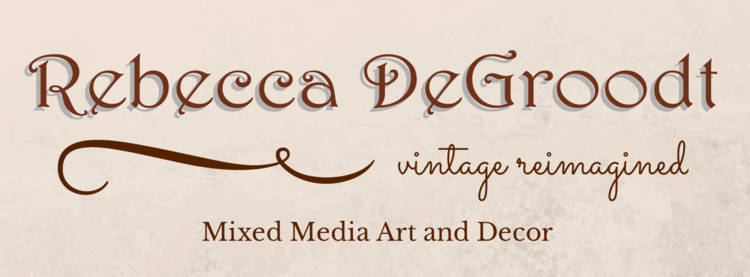Inspired By . . . Vintage Doggies
Wandering down the aisles of an antiques and vintage venue, I have my laser focus on. I’m scanning the shelves, tabletops and random piles for “my” things. As I’ve touched on before — this is a pretty broad category. But one of my all time favorites, sure to spark joy, is a sweet little doggie statue. They might be tiny Wade pottery “whimsies” or crude bisque figures of unknown provenance whose paint has all but worn away. I’m looking for a figure that tells me a story, that when I look at it I can immediately picture a setting, maybe a title, the kinds of adventures and misadventures this particular little charmer might have once and could still get up to.
Not Staffordshire Spaniels . . . this little box is simply stamped “Made in Japan” on the bottom and I would guess dates to the 1930’s or mid 1940’s.
Dogs seem to be as popular in replica as they are as pets. Potteries have been producing dog figurines since the 18th century. Staffordshire Spaniel pairs, de rigueur on the Victorian mantelpiece, are one example of how highly collectible dog figurines can be; a matched pair in good condition from the early 19th century is going to be pricey. Not the kinds of doggies I’m looking for. A much more affordable but still sought after collectible are figurines made in occupied Japan.
A Little History . . .
Japanese imports of ceramics (as opposed to fine china) began flooding the emerging mass market in the second half of the 19th century. In 1891 the McKinley Tariff Act required all imports to be marked in English spelling with the country of origin, in 1921 a new customs law required those marks to be in actual English. So items imported between 1891 and 1921 were stamped “Nippon” (Japanese for Japan). After 1921 and up until exporting ceased due to WWII in 1941, items were simply marked “Japan” or “Made in Japan”.
When the Allies defeated the Axis in 1945, General Douglas MacArthur was entrusted with reviving the Japanese economy. MacArthur focused on ramping up industry and mass-market exports were key to this effort. But the US market was not very receptive to items made by their former enemies, so the word “occupied” was added to the stamp. The occupation period extended from 1945 until 1952. While some figurines stamped simply “made in Japan” slipped through customs during this time, collectors are adamant about the “Occupied Japan” designation. It’s the stamp mark, not the figure itself that is collectible. But these collectibles tend to be very moderately priced, especially if they are under 8” tall — the most common size. In the picture below, the figure marked “Made in Occupied Japan” (actually a musician, another popular motif, not a dog) was $8.00 at an antique fair. Without the “Occupied” mark, it might have been $2 or $3.
Terriers were very popular breeds in the mid-twentieth century, both as pets and ceramic knick-knacks. This little decorative holder for — cards? a small plant? would probably have sold for under $1 at a five and dime.
Neither of these two figures has any kind of identifying mark, so it’s impossible to know when and where they were manufactured. The poodle (who is missing a paw) is made of a resin-like material. The puppy is ceramic, and given its scale, may have been marketed as a dollhouse miniature.
Low price points are very good news to me, since I’m gathering these little characters to play starring roles in mixed-media assemblage art, not as collectibles. I also pick up dog-themed ephemera (postcards, dye cuts) and embroidery to play supporting roles. This wool little boy’s suit is a good example. You can see in the picture that moths have done some damage, so it was only a few dollars. But the puppy dog-embroidered felt pockets and matching collar, too cute! I’m not sure yet exactly how I will use the fabric and embroidery in an assemblage, but it fit my theme too perfectly to pass up.
This series has been on my mind for so long, I’m very eager but also a little nervous to get started. Will the completed projects even come close to realizing my lively and abundant ideas? I’ve chosen seven figurines — well, one is a mother and puppies, so technically 11, for this first series. Each one will be placed in a three-dimensional, box-type assemblage. I’m making this my focus project for March. But given how long it’s taking me to complete the Sanibel-themed projects I started in January . . . well, fingers crossed this group will be done by June. Look for an update at the end of March, and wish me great productivity!








